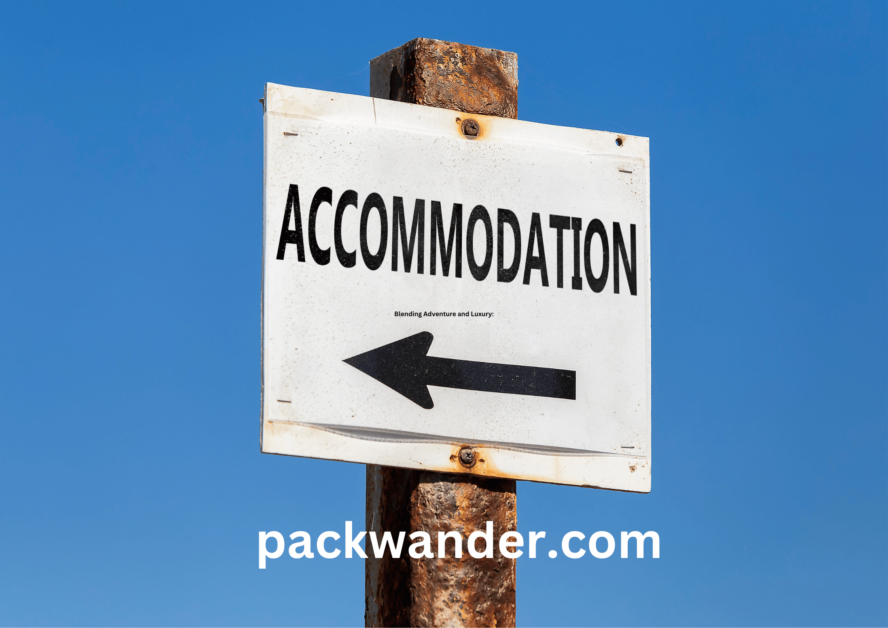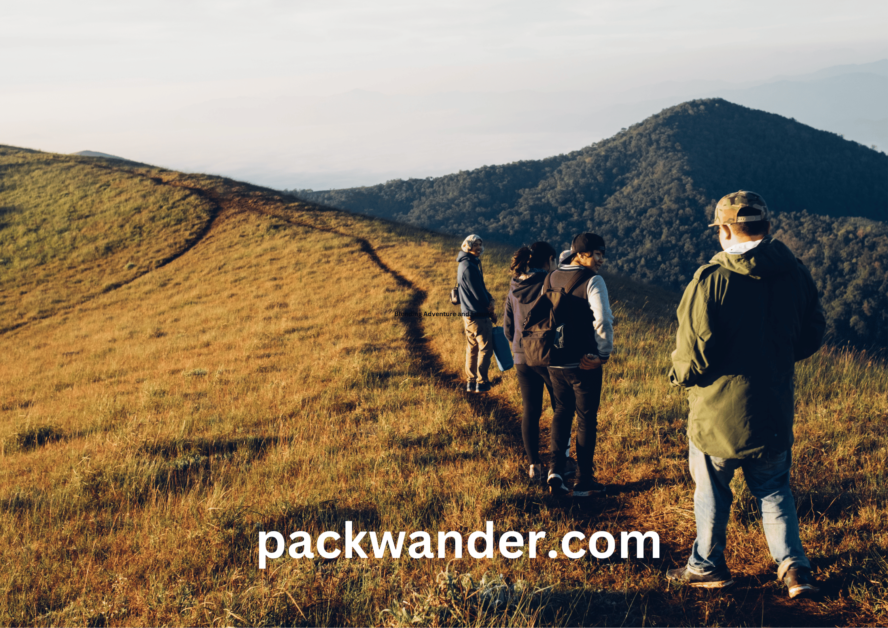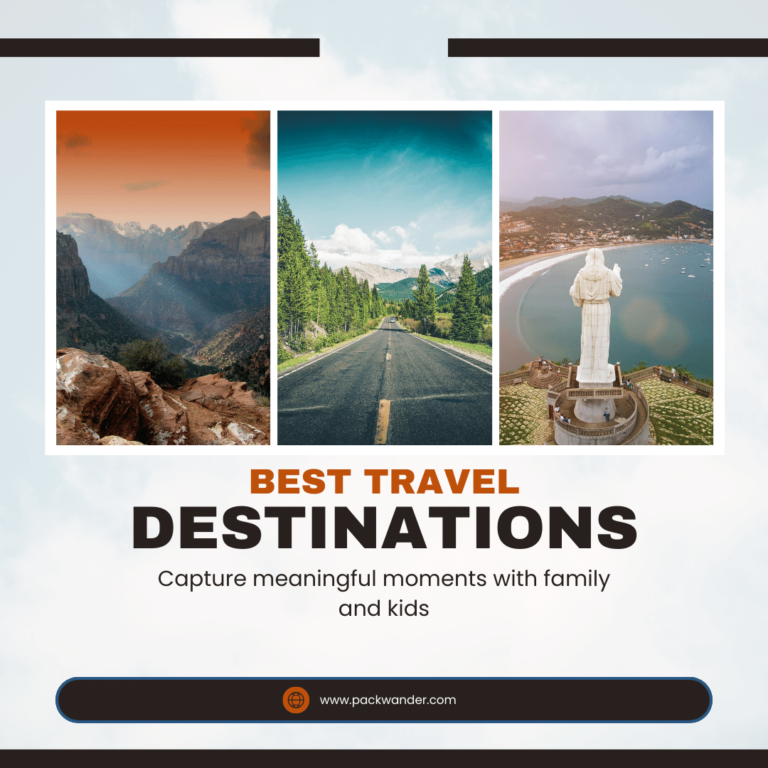How to Backpack Alone: A Comprehensive Guide for Solo Adventurers
Welcome to the world of solo backpacking, where exploring meets peace and quiet. Solo backpacking is more than just a fad. It’s an experience that helps you learn about yourself and gives you memories that you’ll never forget. Did you know that a recent travel survey found that over 30% of adventurous people are now choosing to go backpacking alone? This shows that lots of people are interested in going out and exploring the world on their own.
Why It’s Great:
The best thing about solo backpacking is the mix of freedom, self-reliance, and feeling strong. When you travel alone, you make all the decisions – where to go, who to meet, and how fast to go. You can be spontaneous and deal with unexpected things. Going solo makes you try things you’re not used to, and that helps you grow as a person and feel more sure of yourself.
What This Blog is About:
Are you curious about going on an adventure by yourself, but not sure how to start? Don’t worry! This guide is here to help you that How to Backpack Alone?. It’s like a map that will show you how to have an exciting time backpacking alone. Whether you’ve traveled a lot before or you’ve never tried something like this, this guide will give you all the information and ideas you need to make your solo backpacking dream come true.
So, get your backpack ready, put on your hiking boots, and let’s learn about the art of backpacking alone. This is something that will not only show you beautiful places but also help you understand yourself and the world better.
How to backpack alone?
Step 1: Getting Ready for Your Solo Backpacking Journey
Planning and Research: Before you set out on your solo backpacking adventure, taking the time to plan and research is essential. This will help you make the most of your trip while staying safe and well-prepared.
- 1.1 Embrace Thorough Research: Start by learning about your chosen destination inside and out. Understand its culture, climate, geography, and the attractions it offers. This will not only enhance your experience but also help you pack appropriately.
- 1.2 Understand the Culture and Customs: Learn about the local customs, traditions, and social norms of the place you’re visiting. Respect for the local culture goes a long way in creating positive interactions and avoiding misunderstandings.
- 1.3 Know the Climate and Geography: Check the weather conditions and terrain of your destination. This information will guide your choice of clothing, footwear, and outdoor gear, ensuring you’re adequately prepared for the journey.
- Creating a Detailed Itinerary: While it’s great to have a plan, remember that flexibility is key during solo backpacking. Your itinerary should serve as a rough guide, allowing room for unexpected discoveries and detours.
- 1.4 Craft a Flexible Itinerary: Outline a basic plan for your trip, including the places you want to visit and the activities you’d like to do. However, be open to changes and new opportunities that might arise along the way.
- Packing Essentials: Packing smart is crucial for a successful solo backpacking adventure. Make sure you have the necessary items to keep you comfortable and safe throughout your journey.
- 1.5 Choose the Right Clothing: Pack weather-appropriate clothing that can be layered for different conditions. Don’t forget essentials like comfortable walking shoes, a hat, sunglasses, and a swimsuit if needed.
- 1.6 Gather Essential Gear: Bring lightweight and functional gear such as a backpack, sleeping bag, camping stove, and a multi-tool. Remember, every item should serve a purpose and contribute to your overall comfort.
- 1.7 Prepare a First Aid Kit: Include basic medical supplies like adhesive bandages, antiseptic wipes, pain relievers, and any personal medications you might need.
- 1.8 Navigation Tools: Carry a map, compass, or GPS device to help you navigate unfamiliar terrain. These tools are essential for staying on track and finding your way in case you get lost.
- Prioritize Safety: Ensuring your safety while backpacking alone is paramount. Take precautions to handle emergencies and stay connected with the outside world.
- 1.9 Emergency Contacts: Make a list of emergency contacts both at home and in the destination you’re visiting. Provide your travel plans and contact details to a reliable friend or family member.
- 1.10 Travel Insurance: Invest in comprehensive travel insurance that covers medical emergencies, trip cancellations, and lost belongings. This safety net provides peace of mind throughout your journey.
- 1.11 Communication Devices: Carry a charged mobile phone, a power bank, and any necessary chargers. Having a reliable means of communication can be a lifesaver in emergency situations.
Remember, thorough preparation and a well-packed backpack set the foundation for a successful and enjoyable solo backpacking experience. Now that you’re equipped with these essentials, you’re ready to step into the world of adventure with confidence.
Step 2: Mental and Emotional Preparation for Solo Backpacking

Embarking on a solo backpacking adventure requires more than just physical preparation; it’s about cultivating the right mindset to navigate challenges, embrace the unknown, and make the most of your journey. Here’s how you can ensure you’re mentally and emotionally ready for the experience:
- 2.1 Cultivate the Right Mindset: Solo backpacking demands a positive and adaptable mindset. Embrace the idea that this journey is an opportunity for personal growth, self-discovery, and learning. Approach it with an open heart and a willingness to step out of your comfort zone.
- 2.2 Overcoming Fears and Building Confidence: It’s natural to have fears and doubts before setting off alone. Recognize these emotions, yet don’t allow them to hinder your progress. Each time you face a fear and overcome a challenge, your confidence will grow. Remember, the sense of accomplishment after conquering your worries is immensely rewarding.
- 2.3 Developing Problem-Solving Skills: Solo backpacking often involves unforeseen situations. From navigation difficulties to unexpected weather changes, you’ll encounter obstacles. Treat these challenges as opportunities to refine your problem-solving skills. Analyze the situation, brainstorm solutions, and trust your ability to find your way.
- 2.4 Embrace Positivity and Openness: A positive attitude can transform your solo backpacking experience. Embrace each moment with an open mind and an eagerness to embrace new experiences. Even if things don’t go as planned, view them as valuable learning opportunities that contribute to your growth.
- 2.5 Practice Self-Reflection: Allocate time during your journey for self-reflection. Journaling or simply spending quiet moments in nature allows you to connect with your thoughts, feelings, and aspirations. This introspection can lead to insights and a deeper understanding of yourself.
- 2.6 Connect with Other Travelers: While solo backpacking offers solitude, connecting with fellow travelers can be enriching. Engaging in conversations, sharing stories, and learning from others can enhance your experience and help you see the world from different perspectives.
- 2.7 Embrace Loneliness as Solitude: At times, you may experience moments of solitude that border on loneliness. Use these moments to connect with your inner self, appreciate your surroundings, and find solace in the beauty of your surroundings.
- 2.8 Set Realistic Expectations: Solo backpacking isn’t always glamorous. There will be tough days and challenging situations. By setting realistic expectations, you’re better prepared to handle disappointments and adapt to changing circumstances.
- 2.9 Practice Mindfulness and Gratitude: Stay present in each moment and practice gratitude for the experiences you’re having. Mindfulness helps you fully appreciate the journey, fostering a deeper connection with yourself and the world around you.
- 2.10 Celebrate Small Victories: Acknowledge and celebrate even the smallest achievements during your solo adventure. Whether it’s successfully navigating a trail or striking up a conversation with a local, these victories contribute to your overall sense of accomplishment.
By cultivating a resilient, positive, and open mindset, you’re laying the foundation for a rewarding solo backpacking experience. Remember, the journey is not only about the places you’ll visit but also the personal transformation that occurs along the way. Embrace the mental and emotional aspects of solo backpacking, and you’ll create memories that will stay with you for a lifetime.
Step 3: Figuring Out How to Get Around and Stay
Getting Around:
When you’re all set to go on your adventure, you’ll need to decide how to travel from place to place. Here are some easy ways to move around:
- 3.1 Transportation Options: You can pick from different ways of getting around, like flying in airplanes, riding on buses, or taking trains. Think about what fits your plan and budget best.
Finding a Place to Stay:

The place where you sleep at night holds significance. Here are simple tips to find a comfy spot:
- 3.2 Accommodation Choices: You’ve got options! Stay in hostels, which are budget-friendly places where travelers gather. Or you can camp if you’re into outdoor adventures. Budget lodges are also good if you want a cozy place without spending too much.
Money Matters:
To make the most of your trip, you’ll want to keep track of your money. Here’s how to handle your expenses:
- 3.3 Budgeting and Managing Expenses: Decide on a budget for your trip. Think about how much you’ll spend on food, transportation, and fun activities. Keep track of your spending so you don’t run out of money too soon.
Understanding the Language:
Even if you’re in a new place, you can still communicate. Here’s how to handle language barriers:
- 3.4 Language Considerations: Learning a few local phrases can go a long way. Basics like “hello,” “thank you,” and “where is” can help you get by. People will appreciate your effort, even if you don’t speak their language perfectly.
- 3.5 Basic Local Phrases: Here are a few simple phrases you can learn:
- Hello: “Hello” or “Hi”
- Thank you: “Thank you” or “Thanks”
- Where is: “Where is” followed by the place you want to find
- How much: “How much” for asking about prices
- Help: “Help” if you need assistance
So, when it comes to transportation, stay options, money, and language, these tips should help you navigate the logistics of your solo adventure. With these basics covered, you’re all set to explore the world on your own terms.
Step 4: Making Friends and Connecting on Your Journey

Meeting People:
When you’re out there exploring on your own, meeting new people can add a lot of fun to your trip. Here’s how you can do it:
- 4.1 The Importance of Talking to People: Talking to others can make your solo adventure even more exciting. You can learn from them and share your own stories too.
- 4.2 Ways to Meet Locals and Travelers: Meeting locals and other travelers is a great way to get to know a place. You can strike up conversations at cafes, markets, or even on public transportation. Don’t be shy – many people are friendly and happy to chat!
Joining In Activities:
Getting involved in group activities can be a blast. Here’s how you can jump in:
- 4.3 Group Activities, Tours, and Workshops: Look for tours or workshops happening in the area. It could be a cooking class, a walking tour, or a group hike. These are awesome chances to meet people who share your interests.
Tech to Connect:
Technology can be a big help in meeting people and staying connected. Here’s how you can use it:
- 4.4 Social Media and Travel Apps: Use your phone and travel apps to find events, meetups, and groups in the area. Social media can also help you connect with fellow travelers and locals. Just remember to be safe when meeting people you’ve connected with online.
- 4.5 Staying Open and Friendly: When you’re meeting new people, be yourself! Smile, ask questions, and be open to different perspectives. Sometimes, a simple “hello” can lead to a great conversation and a new friend.
Remember, connecting with others can make your solo adventure even more awesome. So, go ahead and strike up conversations, join in activities, and use technology to create meaningful connections.
Step 5: Keeping Yourself Safe During Your Solo Adventure
Taking Care of Yourself:
When you’re out exploring alone, safety comes first. Here are simple ways to make sure you stay safe:
- 5.1 Personal Safety Tips: Stay aware of your surroundings – that means knowing what’s happening around you. Trust your gut feelings. If a situation doesn’t seem right, it’s perfectly fine to take a step back.
- 5.2 Protecting Your Stuff: Keep your important things safe. Your money, passport, and gadgets should be close to you, like in a pouch under your clothes. Be mindful when using your phone in public, so you don’t attract unwanted attention.
Staying in Safe Places:
Where you stay at night matters for your safety. Here’s how to pick a good place:
- 5.3 Choosing Secure Accommodations: Look for well-lit and secure places to stay. Hostels and guesthouses that have good reviews can be a safe bet. Lock your room when you’re out and keep your valuables in a secure place.
Being Ready for Emergencies:
It’s smart to be prepared in case something unexpected happens. Here’s how you can do that:
- 5.4 Emergency Plans and Local Numbers: Know what to do if there’s an emergency. Find out the local emergency numbers for the place you’re in. Keep a copy of your important documents, like your passport and travel insurance, in a separate place.
- 5.5 Trusting People Wisely: While most people are friendly and helpful, it’s important to be cautious. Be careful not to tell too much about yourself to people you don’t know. Use your judgment and be careful about accepting offers from people you don’t know well.
Remember, staying safe is a top priority during your solo adventure. By being aware, protecting your belongings, choosing secure accommodations, and knowing what to do in case of emergencies, you’re taking important steps to ensure your well-being.
Step 6: Being Kind and Respectful of Different Cultures

Understanding Local Ways:
When you’re in a new place, it’s important to show respect for the people and their traditions. Here’s why it matters:
- 6.1 The Value of Learning and Respect: Each place has its own customs and beliefs. Learning about them shows that you care and helps you connect with the locals.
- 6.2 Dressing Right and Acting Well: Respect local dress codes. In some places, modest clothing is appreciated. Also, behave in ways that are polite and considerate. What might be okay at home could be different somewhere else.
Taking Care of the Earth:
Being a responsible traveler means thinking about the environment. Here’s how you can contribute:
- 6.3 Being a Good Tourist: When you visit a place, leave it as beautiful as you found it. Don’t litter, and follow local rules about waste disposal. Also, support local businesses and artisans to help the community thrive.
- 6.4 Being Mindful of Nature: When you’re exploring nature, stay on marked paths to avoid harming plants and animals. Respect wildlife from a distance and avoid feeding them. This helps keep their habitats safe.
- 6.5 Appreciating Historical and Sacred Sites: Some places are very special to the local culture. Treat historical and sacred sites with respect. Follow the rules about photography, dress, and behavior.
Remember, being aware of and respectful toward different cultures shows kindness and helps create a positive experience for both you and the people you meet. By dressing right, behaving well, and being mindful of the environment, you’re contributing to a more harmonious and meaningful travel experience.
Step 7: Remembering Your Adventure
Recording Your Travels:
While you’re out having fun, it’s great to keep track of your experiences. Here’s how:
- 7.1 Writing in a Travel Journal or Blog: Jot down your thoughts and adventures in a journal or online blog. This helps you remember the details and share your journey with others.
Capturing Special Moments:
Pictures and videos can help you remember the cool things you’ve seen. Here’s how to do it:
- 7.2 Taking Photos and Videos: Use your camera or phone to snap pictures and shoot videos. Capture the scenery, the people you meet, and the things you do. These memories will last a lifetime.
Sharing Your Story:
Your journey is exciting, and others would love to hear about it. Here’s a way to go about sharing your experiences:
- 7.3 Telling Friends, Family, and Online Friends: Talk to your loved ones about your trip. Show them your pictures and tell them your stories. You can also share on social media to let others join in on your adventure.
- 7.4 Joining Online Communities: There are online groups where travelers share their stories. You can connect with people who have similar interests and learn from their experiences too.
Remember, documenting your journey helps you relive your adventures and share them with others. Whether you’re writing, taking pictures, or sharing online, these memories will be with you long after you’ve returned home.
Step 8: Facing Tough Times and Growing Stronger
Dealing with Hard Moments:
Sometimes, solo backpacking can be tough. But challenges can also help you learn and grow. Here’s what to know:
- 8.1 Common Challenges: You might face things like getting lost, dealing with a language barrier, or feeling homesick. These are normal challenges that many travelers encounter.
Learning from Tough Situations:
When things don’t go as planned, there’s still a silver lining. Here’s how to turn setbacks into opportunities:
- 8.2 Adapting and Growing: When you face a tough situation, take a deep breath. Stay calm and think about your options. Being flexible and finding solutions will help you overcome obstacles.
- 8.3 Becoming More Resilient: Overcoming challenges builds resilience – the ability to bounce back. Remember that every challenge you conquer makes you stronger and more confident.
- 8.4 Embracing Personal Growth: Through challenges, you learn more about yourself. You’ll discover your strengths and capabilities. This personal growth is one of the best parts of solo backpacking.
Remember, challenges are a part of every journey. Embrace them, adapt, and learn. By facing difficulties with courage and openness, you’re setting yourself up for amazing growth and transformation. So, when things get tough, remember that you have the power to rise above and come out even stronger on the other side.
Tips for a Successful Solo Backpacking Experience

Going on a solo backpacking adventure can be awesome! Here are some easy tips to make sure you have a great time:
- 1. Stay Positive: When you’re out there on your own, it’s important to keep a happy and hopeful attitude. Remember, challenges are just part of the adventure!
- 2. Embrace Solitude: Being alone in nature can be peaceful and wonderful. Enjoy the quiet moments and take time to reflect.
- 3. Plan Your Time: Bring a journal, a book, or a musical instrument to keep you entertained during downtime.
- 4. Be Safe: Tell someone you trust where you’re going and when you’ll be back. Carry a whistle, a flashlight, and a basic first aid kit.
- 5. Trust Your Instincts: If something doesn’t feel right, it’s okay to change your plans or turn back. Your gut feeling is important!
- 6. Meet New Friends: You’re not really alone—there are other travelers out there too. Chat with fellow backpackers, share stories, and make new friends.
- 7. Pack Smart: Bring only what you need. Lighter backpacks make for happier hikers!
- 8. Take Breaks: Rest when you need to. Sit down, enjoy the view, and have a snack.
- 9. Enjoy the Little Things: Nature is full of surprises. Watch the sunset, listen to the birds, and take in the beauty around you.
- 10. Stay Hydrated and Fed: Drink water regularly and have enough snacks to keep your energy up.
- 11. Be Eco-Friendly: Take care of the environment by not leaving any trash behind. Leave nature as you found it.
- 12. Learn Basic Skills: Knowing how to read a map and use a compass can help you find your way around.
- 13. Keep It Light: Your backpack should have the essentials, but don’t overpack. A heavy backpack can make hiking harder.
- 14. Stay Open-Minded: Be open to new experiences and unexpected moments. They often make the best memories.
- 15. Have Fun! Remember, this is your adventure. Take it all in, have fun, and enjoy every step of the journey.
backpacking alone as a woman:

A. Safety and Preparedness
- Being safe is really important, especially for women who backpack alone. Here are some simple things you can do to stay safe and be ready:
- 1. Share Your Plans: Tell someone you trust where you’re going and when you’ll be back. This way, they’ll know if something’s not right.
- 2. Stay Aware: Pay attention to your surroundings. Trust your feelings – if something feels off, be cautious.
- 3. Self-Defense Basics: Learn a few basic self-defense moves. It can help you feel more confident if you ever need to protect yourself.
- 4. Stay Connected: Carry a charged phone and a power bank. If you need assistance, you can call or send a message to someone for help.
- 5. Use Noisy Tools: A whistle or a loud alarm can scare off animals or signal for help.
B. Empowerment and Inspiration
Backpacking alone can be super inspiring for women. You have the opportunity to gain valuable insights and grow in strength. Here’s how:
- 1. Hear Real Stories: Read about other women who traveled alone. Their experiences can motivate you and give you good ideas.
- 2. Believe in Yourself: When you overcome challenges on your own, you start believing in your abilities. This makes you feel strong.
- 3. Learn from Tough Times: Sometimes things don’t go perfectly. But when you figure things out, you become better at solving problems.
- 4. Feel Free and Confident: Being on your own gives you a special kind of freedom. You can make choices without needing anyone’s approval.
- 5. Grow as a Person: Solo backpacking makes you more independent and brave. You learn to rely on yourself and your skills.
Remember, you’re capable and awesome! Solo backpacking can teach you so much and help you feel really strong. Just follow these simple tips to be safe and prepared, and let the journey inspire you to be even more amazing.
Backpacking Alone for the First Time
Embarking on your first solo backpacking adventure is both exciting and a little nerve-wracking. Here’s a straightforward guide to help you make the most of this unforgettable experience:
- 1. Choose the Right Destination: Pick a destination that matches your skill level and interests. Research trails that offer a good balance of challenge and enjoyment.
- 2. Plan Wisely: Create an itinerary that outlines your route, daily distances, and estimated time. Planning ahead helps you feel more confident and organized.
- 3. Pack Smartly: Pack essentials like a tent, sleeping bag, food, water, and a first aid kit. Make sure your backpack isn’t too heavy—only carry what you truly need.
- 4. Inform Others: Tell a friend or family member about your trip details. Inform them of your travel plans, including your itinerary and anticipated date of return. It’s a safety precaution.
- 5. Practice Navigation: Learn basic map reading and navigation skills. Using both a compass and a GPS device can assist you in navigating your path.
- 6. Start Small: If you’re new to backpacking, consider a shorter trip for your first time. It helps you get used to the experience without overwhelming yourself.
- 7. Embrace the Challenge: Expect some challenges along the way. Don’t be discouraged by them; they’re all part of the adventure.
- 8. Stay Positive: Maintain a positive mindset. Solo backpacking can be tough, but a positive attitude makes a huge difference.
- 9. Connect with Nature: Take in the beauty around you. Disconnect from the digital world and truly immerse yourself in the wilderness.
- 10. Enjoy Solitude: Embrace the solitude and quiet moments. It’s a chance to reflect, recharge, and find inner peace.
- 11. Capture Memories: Bring a camera to document your journey. Photos and journal entries will help you relive the experience later.
- 12. Be Adaptable: Things might not go as planned, and that’s okay. Adaptability is a valuable skill in backpacking.
- 13. Stay Safe: Prioritize your safety. Follow safety guidelines, be cautious of your surroundings, and trust your instincts.
- 14. Celebrate Achievements: Celebrate every milestone, whether it’s reaching a peak or setting up camp successfully.
- 15. Reflect and Learn: After your trip, take time to reflect on what you learned and how you grew. Each encounter presents an opportunity for enhancement.
- 16. Stay Inspired: Let this first solo backpacking adventure inspire you to explore more, learn more about yourself, and continue embracing new challenges.
Remember, your first solo backpacking experience is a special one. Embrace the journey, take things step by step, and cherish the memories you create along the way.
Conclusion: Embrace the Adventure of Solo Backpacking
As you wrap up your journey into the world of solo backpacking, remember these important points:
Throughout this guide, we’ve covered how to prepare wisely for your solo adventure. From understanding local customs and staying safe to connecting with people and documenting your experiences, you’ve gained valuable insights into making the most of your journey.
Benefits of Solo Backpacking:
Solo backpacking offers a unique blend of freedom and self-discovery. It’s a chance to challenge yourself, build confidence, and grow as an individual. By stepping out of your comfort zone and embracing new experiences, you’ll create memories that will stay with you forever.
Embark on Your Own Adventure:
Now, armed with newfound knowledge and confidence, you’re ready to embark on your very own solo backpacking adventure. Embrace the thrill of exploration, the serenity of solitude, and the personal growth that comes with it. Whether you’re a seasoned traveler seeking a new kind of adventure or a first-timer eager to take that leap, remember that the world is waiting for you to discover it on your own terms.
Stay Curious and Open-Minded:
As you explore unfamiliar terrains, experience different cultures, and navigate through times of difficulty and success, maintain a receptive spirit and an inquisitive attitude. Embrace each experience as an opportunity for growth and connection – with both the world around you and the incredible person you’re becoming.
So, fasten your backpack, lace up your hiking boots, and step confidently into the world of solo backpacking. Your adventure awaits, and with the lessons from this guide in your pocket, you’re sure to make the most of every step you take.







